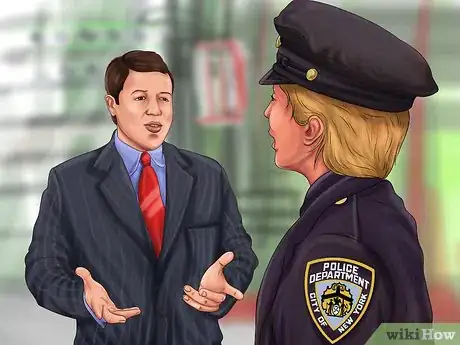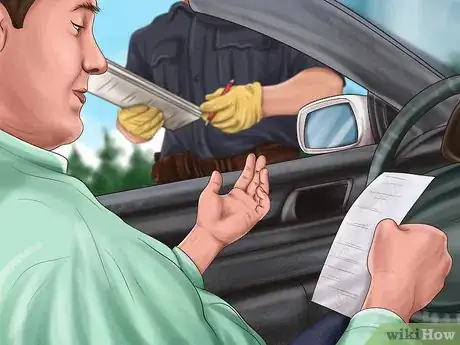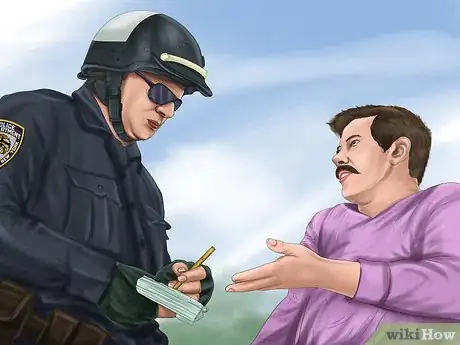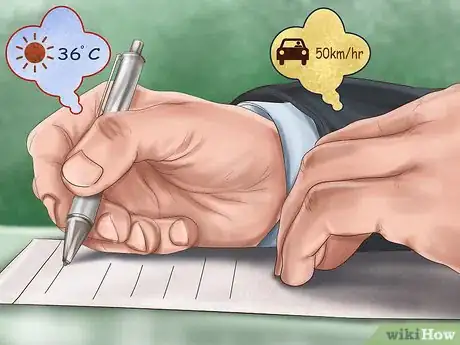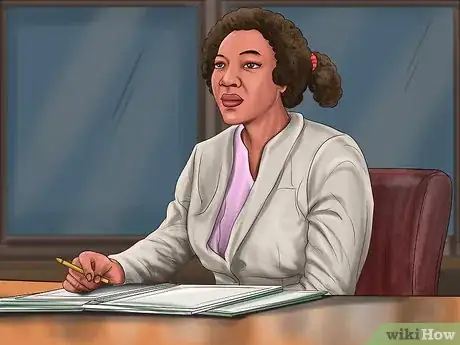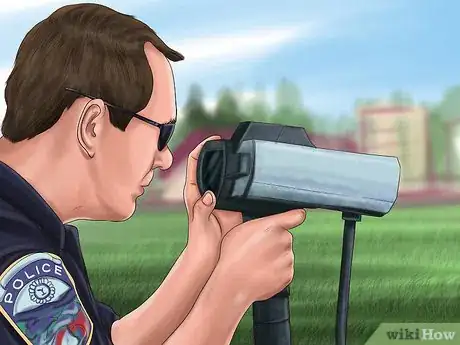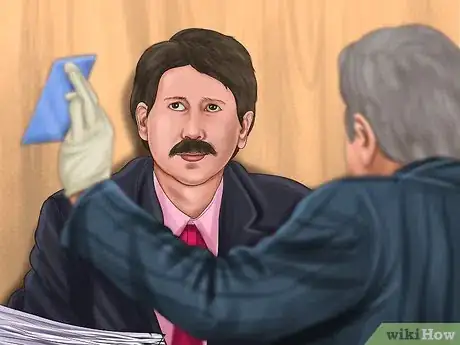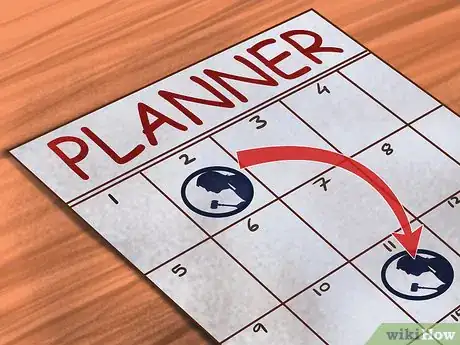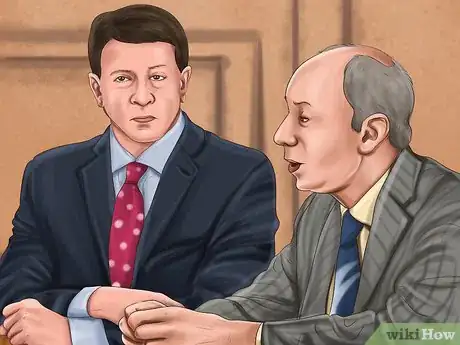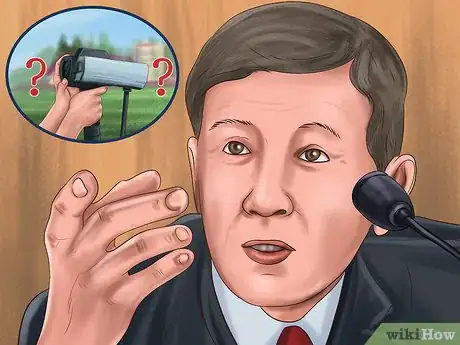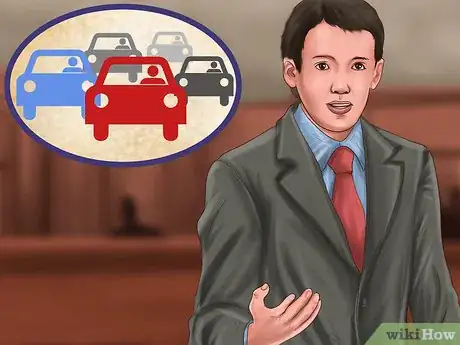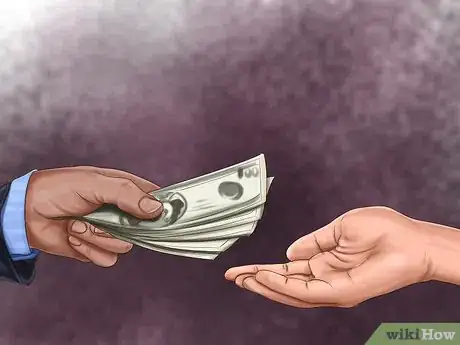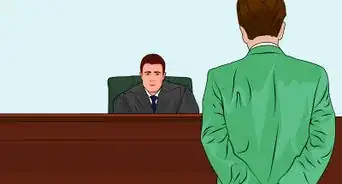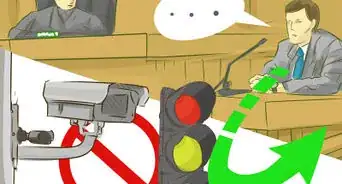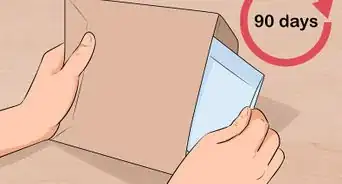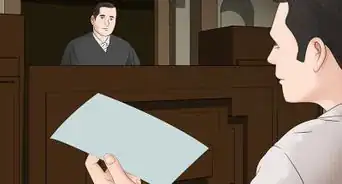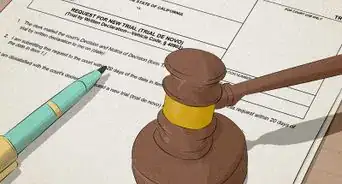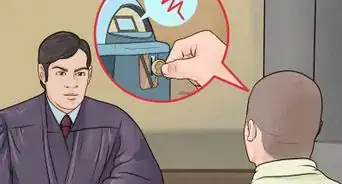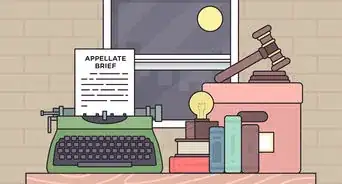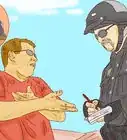X
This article was co-authored by Clinton M. Sandvick, JD, PhD. Clinton M. Sandvick worked as a civil litigator in California for over 7 years. He received his JD from the University of Wisconsin-Madison in 1998 and his PhD in American History from the University of Oregon in 2013.
This article has been viewed 123,775 times.
A speeding ticket results in a fine, along with higher insurance premiums in some cases. It is in your best interest to try to get out of a ticket. Sometimes you can convince a police officer not to issue a ticket shortly after you were stopped. In other situations, you will have to go to court and fight the ticket as part of a trial.
Steps
Part 1
Part 1 of 2:
Talking Your Way out of a Ticket
-
1Be polite. The police officer has all of the power over whether or not to issue a ticket. It is in your best interest to be polite.
-
2Follow all directions. Be as easy to deal with as possible. The less difficulty you create for the officer, the more likely it is that he won’t remember much about you. If you have to contest the ticket later, at trial, then you could benefit if the officer can’t remember anything about you.Advertisement
-
3Don’t admit that you were speeding. Also don’t deny it. If the officer asks if you know why you were stopped, you shouldn’t say, “I was speeding.” However, you can escalate tensions if an officer tells you that you were speeding and you try to deny it.[3]
- When the officer tells you that you were speeding, stay quiet or say, “Oh…” or something equally non-committal.
-
4Ask that the officer not give you a ticket. You can politely ask the officer to give you a warning instead of a ticket.[4] All you need to say is, “Would you consider giving me a warning?”
- If a polite request doesn’t work, remain quiet. Anything you say will be written down in the notes section of the speeding ticket.[5] Angry, sarcastic statements can only serve to hurt you later on. Those types of comments can motivate an officer to show up at a trial to make sure you are found guilty.
- However, you should be sure to ask at some point what technology the officer used to gauge your speed.[6] Typically, cops measure speed with the use of radar, laser, or some other technology.
-
5Document the facts. If you plan on appealing your ticket, then you will need to document the facts surrounding your speeding ticket. Write down your speed, the weather conditions, and the speed limit where you were issued the ticket. Also note whether or not you were driving in moderate or heavy traffic, or if you were the only car on the road.
- Write this information down as soon as possible while it is fresh in your mind. This way, you will be sure to have correct information.
Advertisement
Part 2
Part 2 of 2:
Appealing a Speeding Ticket
-
1Attend your hearing. At the initial hearing, you will not argue your case but will instead plead “guilty” or “not guilty.” After you plead “not guilty,” the judge will schedule the trial date.
- You should dress nicely to attend the hearing, because you will probably be appearing in front of the same judge who will preside over your trial. Business casual (a pressed dress shirt and dress pants) is acceptable attire.
- In some situations, you can get out of your speeding ticket without going to trial. For example, in some states, if you have never gotten a ticket before then you are eligible for traffic school if you show up to your hearing.[7]
- Also, if you were ticketed because you did not have proof of insurance in your car, then many courts will allow you to get out of the ticket if you present your proof of insurance before your hearing date.
-
2Understand the prosecutor’s case. Principally, you will want to understand how the police officer judged that you were speeding. The most common methods of gauging speed are “pacing,” radar, laser, and VASCAR (Visual Average Speed Computer and Recorder). Each are vulnerable to different criticisms:
- Pacing. Here, the officer gauges your speed by following behind you for a length of time to judge how fast you are going. You can attempt to discredit this speed reading by pointing out the officer was too far back to adequately follow you at a consistent speed, or that hills, curves, and traffic lights prevented the officer from following you for a sufficient length of time.[8]
- Radar. This technology uses radio waves which reflect off a car and then are picked up by a receiver. Radar speed readings are vulnerable to certain challenges. For example, radio waves can hit more than one car, or there may be problems with the radar’s calibration. Also, rain, wind, and storm clouds can send back erroneous speed readings.[9]
- Laser. Laser technology sends 40 beams of light over the course of a second toward the vehicle. The rate at which the light reflects back translates into the speed the car is going. One weakness with laser technology is that all of the beams need to hit the same spot on the car. Also, like radar, light beams could reflect off other cars.[10]
- VASCAR technology. This fancy name is used for a very simple technology of measuring speed. Here, the officer measures the distance between two points (say a telephone pole and mailbox). Then, the officer uses a stopwatch to measure the amount of time it takes you to pass from one point to the other. The time will then be mathematically adjusted to produce a miles-per-hour reading. VASCAR measurement is obviously vulnerable to claims of human error: the officer didn’t start and stop the stopwatch accurately or did not accurately perceive when you crossed one of the markers.[11]
-
3Gather evidence for trial. After you have been assigned a trial date, you should begin crafting your defense. Crucial to your success will be evidence to present at trial. If you want evidence from the state, ask the court clerk how to make a discovery motion.[12]
- You can also request a copy of the prosecutor's evidence. The evidence file may include the officer's notes, a video of the traffic stop, or a drawing depicting the scene. You should know what evidence the prosecutor will present.
- Also request the operator’s manual for whatever form of technology was used to track your speed. These manuals are written for police to use and often include information about potential flaws or problems with the technology. You can then quote the language to the court during your trial as you try to cast doubt on the credibility of the speed reading.[13]
-
4Contact witnesses for trial. Ask witnesses if you appeared to be going the same speed as other cars, or if you were passing them. The most likely witness is someone who was in the car with you when you were stopped.
- You might want to remind them of the trial date so that they will be sure to attend.
-
5Postpone the trial for as long as possible. By postponing the trial, you increase the likelihood that the officer will forget about you and not show up in court. Judges will drop the case if the officer doesn’t show.[14]
- Ask the court clerk how many times you can request a delay, and how many days before the trial you need to make the request. State law varies.
- Also call the police department and try to find out when the officer is taking a vacation. If you can time things just right, you can push a trial off until the officer is away on vacation.
-
6Attend your trial. Arrive on time and in conservative attire. Have any documents prepared to use at trial. The notes you took immediately after being stopped is good evidence.
-
7Challenge the determination of speed. Depending on the technology used to gauge your speed, you can challenge it on the grounds stated above. Also, you can ask the officer how much training he or she had with the technology.[15] Asking this question helps cast doubt on the officer’s ability to use the technology properly, and any technology is only as good as the person using it.
-
8Challenge the officer’s identification of your car. You may also argue that the officer didn’t identify the right car. If you were driving in moderate or heavy traffic, you could argue that the officer used the radar or laser on the wrong car.
- You can ask leading questions to rattle the officer. If your car is blue, ask “Did you see the other blue car in front of me?” This might fluster the officer.
-
9Request that the case be dismissed, if possible. At the close of evidence, you should argue that the government has not established that you were speeding. Be specific and point to limitations in the state’s case. For example, the fact that an officer received only a half hour of training to use radar technology casts doubt on whether the technology was used accurately.
- Also, if the ticketing officer does not show up to the trial, you have the right of dismissal.
-
10Wait for the verdict. If you are found not guilty or the case is dismissed, you do not have to pay the ticket. If you are found guilty, you will have to pay the fine listed on the speeding ticket, plus court costs.
- Be sure to call ahead and ask how you can pay your fine. Be sure to bring an acceptable method of payment (credit card, personal check, cash).
Advertisement
Things You'll Need
- Police officer and witness contact information
- Documentation used by the prosecution
- Speeding ticket
References
- ↑ http://thoughtcatalog.com/christine-stockton/2014/05/cops-explain-how-to-get-out-of-a-speeding-ticket/
- ↑ http://thoughtcatalog.com/christine-stockton/2014/05/cops-explain-how-to-get-out-of-a-speeding-ticket/
- ↑ http://www.streetdirectory.com/travel_guide/43/cars/how_to_escape_a_speeding_ticket_by_getting_away_with_a_warning.html
- ↑ http://thoughtcatalog.com/christine-stockton/2014/05/cops-explain-how-to-get-out-of-a-speeding-ticket/
- ↑ http://thoughtcatalog.com/christine-stockton/2014/05/cops-explain-how-to-get-out-of-a-speeding-ticket/
- ↑ http://www.nolo.com/legal-encyclopedia/free-books/beat-ticket-book/chapter6-1.html
- ↑ http://www.forbes.com/2009/04/13/beat-speeding-ticket-lifestyle-vehicles-speeding-ticket.html
- ↑ http://www.nolo.com/legal-encyclopedia/free-books/beat-ticket-book/chapter6-1.html
- ↑ http://www.nolo.com/legal-encyclopedia/free-books/beat-ticket-book/chapter6-1.html
- ↑ http://www.nolo.com/legal-encyclopedia/free-books/beat-ticket-book/chapter6-1.html
- ↑ http://www.nolo.com/legal-encyclopedia/free-books/beat-ticket-book/chapter6-1.html
- ↑ http://www.forbes.com/2009/04/13/beat-speeding-ticket-lifestyle-vehicles-speeding-ticket.html
- ↑ http://www.nolo.com/legal-encyclopedia/free-books/beat-ticket-book/chapter6-1.html
- ↑ http://www.bankrate.com/brm/news/auto/20070330_traffic_ticket_court_a2.asp
- ↑ http://www.nolo.com/legal-encyclopedia/free-books/beat-ticket-book/chapter6-1.html
About This Article
Advertisement
